|

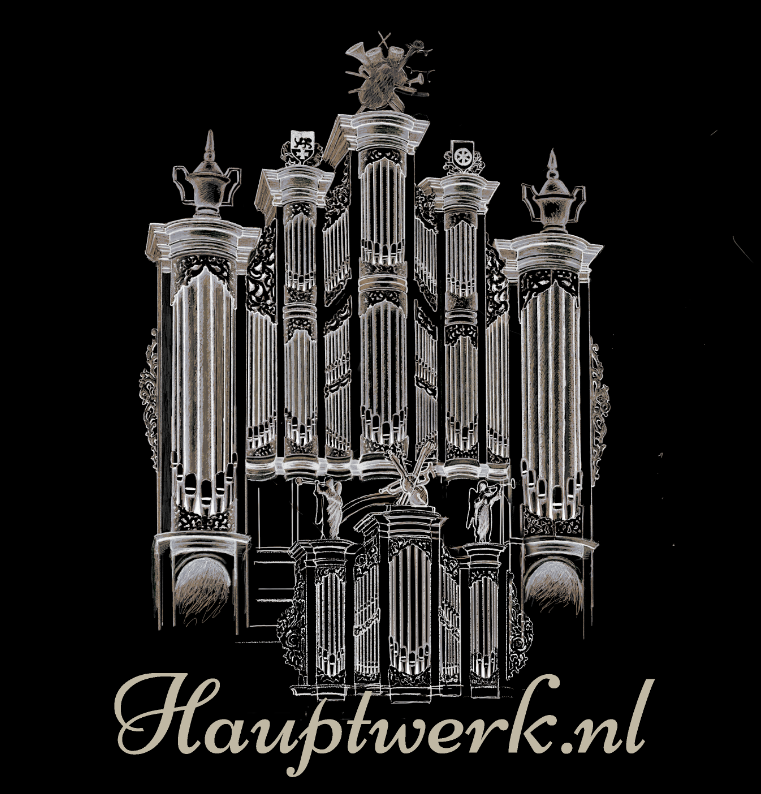




 


|
The Midwolde sample set comes with 4 organ Definition Files:
1A: Original tuning for a screen resolution of 1280 x 1024.
1B: Original tuning for a screen resolution of 1024 x 768.
2A: Well tempered tuning for a screen resolution of 1280 x 1024.
2B: Well tempered tuning for a screen resolution of 1024 x 768.
Our advice is to delete the ODF with the resolution you are not using. The mixed use of two resolutions gives problems with
the sizing of the various images in Hauptwerk. If this problem arises, it is recommended that the organ be reloaded using
"Design Tools/Load organ with design options".
1A/1B have OrganID 775 and 2A/2B have OrganID 776. For this reason, after installation in Hauptwerk, the various channels,
manuals and combinations need to be defined separately.
Tremulant: Because all the pipes have been separately recorded with tremulant, (thus the tremulant is heard as it actually is)
all the settings defined via "Organ settings/Pipe and rank voicing" for the normal voices also need to be extended to
the tremulated voices to avoid unwanted side effects.
It is advisable not to set the volume of the actual tremulant too low. If one does, then when a key is released, there is an
unnatural silence.
|
|
The tab "Pictures" (clicking on the image toggles between photos)
|
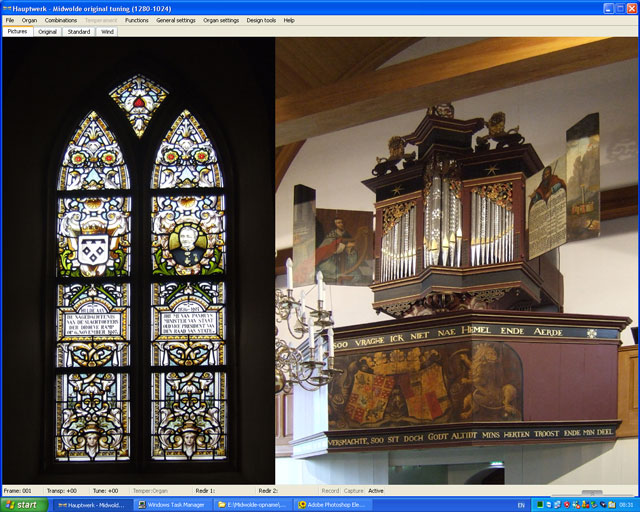
Window and organ front
|
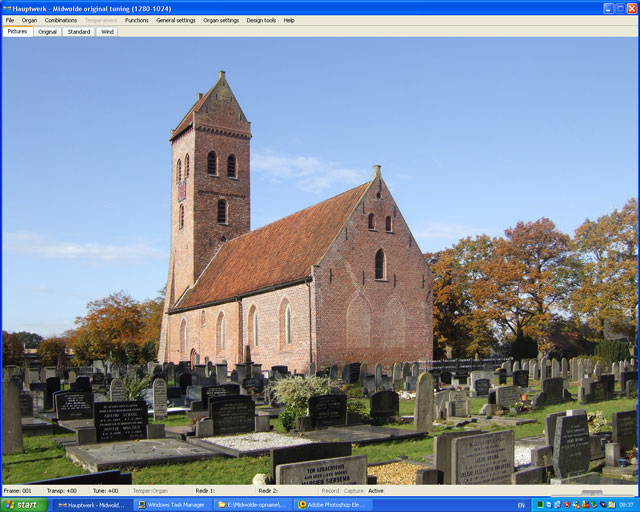
The church
|
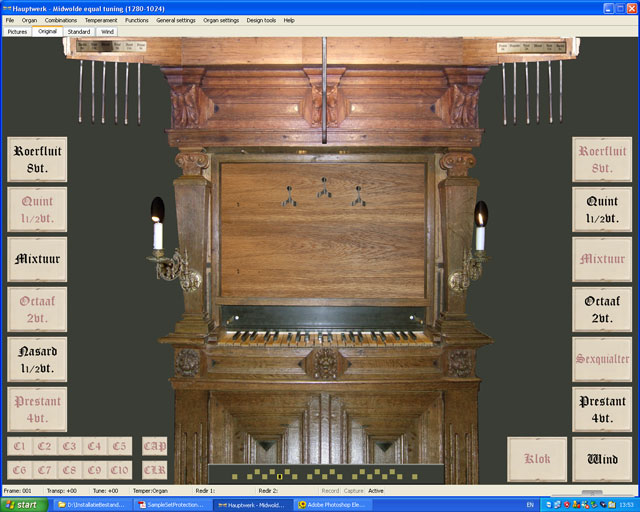
The virtual original keyboard
|
On the left you will see the console for the version meant for Hauptwerk 5. We have chosen to provide one
Organ Definition File with one tab for the original version and one for the standard version.
The virtual console depicted here for the organ of Midwolde is closest to the actual situation.
The original organ has a so-called "short octave". This so-called "short octave" is actually a "long octave" since older keyboards
did not extend lower than F (with the keys F,G,A,A-sharp,B). If the organist wanted lower keys, then the organ builder would
add C,D,E in a very efficient manner. We now call this a "short octave" but in reality keys were not deleted but added.
Later on naturally, more keys were added (F-sharp, G-sharp, etc).
On the original Midwolde organ, pressing the
E key causes C to play,
F plays F,
F-sharp plays D,
G plays G and
G-sharp plays E.
The rest is normal.
The original organ lacks a pedal but for Hauptwerk we have added a 21 note pull-down pedal.
The small squares at the bottom of the image indicate which key has been pressed. Here we have also implemented the "short octave".
To use the original keyboard in HW 5, use "Organ Settings/Connect Keyboard MIDI inputs to Organ Keyboards" to connect one
of your keyboards to MANUAAL ORG.
To use the original pedal with HW 5, use "Organ Settings/Connect Keyboard MIDI inputs to Organ Keyboards" to connect
your pedal with PEDAL ORG.
|
On the right you will see the virtual implementation of a normal keyboard. With this, the Midwolde organ can be played normally.
The 25-note pull-down pedal is now normally constituted. The small squares at the bottom of the image indicate which key is pressed.
C-sharp, D-sharp, F-sharp and G-sharp, pipes not originally present, have been added by retuning neighbouring pipes.
To use the normal keyboard in HW3, use "Organ Settings/Connect Keyboard MIDI inputs to Organ Keyboards" to connect
one of your keyboards to MANUAAL STD.
To use the normal pedal with HW3, use "Organ Settings/Connect Keyboard MIDI inputs to Organ Keyboards" to
connect your pedal with PEDAL STD.
|
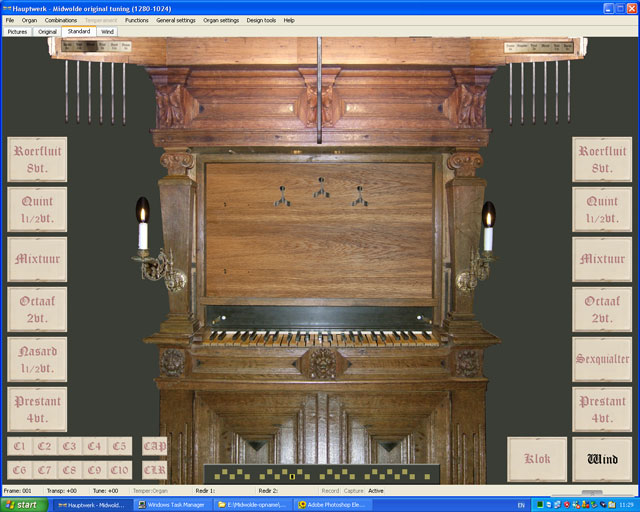
The virtual standard keyboard
|
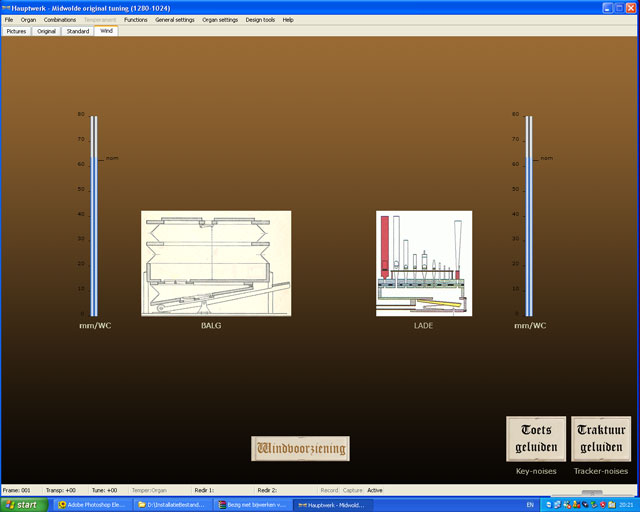
Wind supply
|
On the left you will see a representation of the wind supply. In addition, here you will find the buttons with which to
turn on or off the key and stop action sounds.
Depending on the wind usage, the candles next to the virtual music desk will flicker less or more.
|
|
|
Hauptwerk.nl is an initiative from Sygsoft Holland. KvK 93602855. Last updated
2024-04-20
|
|
|